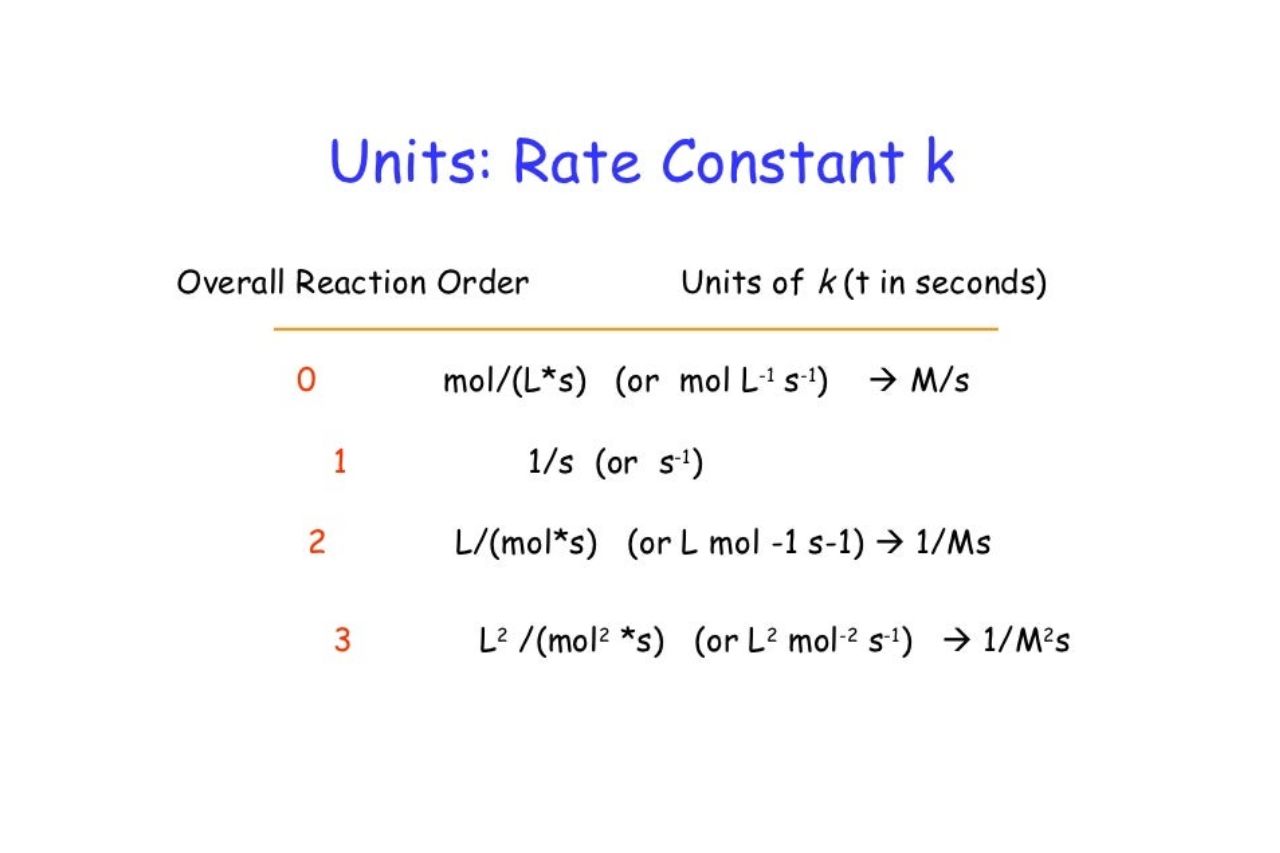
When studying the field of chemistry, it is essential to delve into the world of reaction kinetics. One crucial aspect of reaction kinetics is the concept of rate constants. Rate constants play a significant role in understanding the speed and efficiency of chemical reactions, providing valuable insights into reaction mechanisms and reaction rates.
Rate constants are not only important for theoretical calculations but also find practical applications in industries such as pharmaceuticals, environmental sciences, and material synthesis. Identifying and comprehending the factors that affect rate constants can lead to the development of more efficient processes and the discovery of groundbreaking chemical reactions.
In this article, we will explore fourteen fascinating facts about rate constants, shedding light on the intricacies of these fundamental constants and the intriguing world of chemical kinetics.
Key Takeaways:
- Rate constants determine how fast chemical reactions happen. They depend on temperature, catalysts, and reaction order. Understanding them helps predict and control reactions, from making medicines to protecting the environment.
- Rate constants are like the secret codes of chemical reactions. They reveal the speed and steps of reactions, and their knowledge is used in making new drugs, designing better materials, and understanding the world around us.
What is the Rate Constant?
The rate constant, often denoted as k, is a fundamental concept in chemical kinetics. It represents the proportionality constant in the rate equation that relates the rate of a chemical reaction to the concentrations of reactants. The rate constant is specific to a particular reaction and is influenced by various factors, such as temperature, pressure, and catalysts.
Rate Constant and Reaction Rates
The rate constant plays a crucial role in determining the speed at which a reaction occurs. A higher rate constant indicates a faster reaction, while a lower rate constant indicates a slower reaction. Understanding the rate constant allows chemists to predict and control the reaction rates under different conditions.
Temperature Dependence of the Rate Constant
One fascinating aspect of the rate constant is its strong dependence on temperature. In most cases, an increase in temperature leads to an increase in the rate constant. This relationship is described by the Arrhenius equation, which relates the rate constant to the activation energy and temperature.
Theoretical Determination of Rate Constants
Chemists often use theoretical models and computational methods to determine rate constants for complex reactions. These methods involve sophisticated calculations and simulations to understand the reaction mechanism and predict the rate constant based on molecular properties.
Experimental Determination of Rate Constants
Experimental techniques, such as the method of initial rates and chemical kinetics studies, are employed to measure rate constants directly. With the advancement of modern analytical tools and techniques, scientists can accurately determine rate constants for a wide range of reactions.
Relationship Between Rate Constants and Equilibrium Constants
There is a fundamental connection between rate constants and equilibrium constants in chemical reactions. The ratio of forward and reverse rate constants at equilibrium is equal to the equilibrium constant (K). The values of rate constants and equilibrium constants provide valuable insights into the direction and position of a chemical reaction.
Units of Rate Constants
Rate constants have different units depending on the order of the reaction. For example, the units of a first-order rate constant (k) are usually inverse seconds (s?¹), while the units of a second-order rate constant are usually M?¹·s?¹.
Activation Energy and the Rate Constant
The activation energy is the minimum energy required for a chemical reaction to occur. The rate constant is exponentially related to the activation energy, following the Arrhenius equation. A higher activation energy leads to a lower rate constant, indicating a slower reaction.
Catalysis and Rate Constants
Catalysts are substances that increase the rate of a reaction without being consumed in the process. They achieve this by providing an alternative reaction pathway with a lower activation energy. The presence of a catalyst can significantly influence the rate constant and enhance the reaction rate.
Rate Constant and Reaction Mechanisms
The rate constant provides important information about the reaction mechanism, which is the sequence of elementary steps involved in a chemical reaction. By analyzing the rate constant and reaction kinetics, scientists can gain insights into the individual steps of a complex reaction.
Rate Constant and Elementary Reactions
In some cases, a reaction may consist of a single elementary step. For such reactions, the rate constant directly corresponds to the rate of that step. Elementary reactions often exhibit simple rate laws, allowing for a straightforward determination of the rate constant.
Temperature and Collision Theory
The rate constant is closely related to the principles of collision theory, which states that reactions occur when reactant molecules collide with sufficient energy and proper orientation. Temperature influences the rate constant by affecting the frequency and energy of molecular collisions.
Rate Constant and Reaction Order
The order of a reaction describes the dependence of its rate on the concentrations of reactants. The rate constant is different for different reaction orders. For example, a first-order reaction has a constant rate, while a second-order reaction exhibits a rate constant that varies with concentration.
Applications of Rate Constants
The knowledge of rate constants finds applications in various fields of chemistry and beyond. It helps in understanding and controlling chemical reactions, designing efficient catalysts, developing pharmaceuticals, and even studying atmospheric and environmental processes.
These fascinating facts about rate constants highlight its significance in the study of chemical kinetics and its applications in diverse areas of science. Understanding rate constants is essential for unraveling the mysteries of reactions and advancing our knowledge of the chemical world.
Remember, when it comes to chemical kinetics, rate constants are the key to uncovering the secrets of reaction rates and mechanisms.
So, remember the “14 Fascinating Facts About Rate Constant” and dive into the exciting world of chemical kinetics!
Conclusion
In conclusion, the rate constant is a fundamental concept in chemistry that plays a crucial role in understanding the kinetics of chemical reactions. It is a measure of the speed at which a reaction occurs and is influenced by various factors such as temperature, concentration, and catalysts. Understanding rate constants can help chemists predict reaction rates, design efficient industrial processes, and develop new drugs.
Throughout this article, we explored 14 fascinating facts about rate constants, including their significance in chemical kinetics, how they vary with temperature, and their connection to the Arrhenius equation. We also learned about the collision theory and the role of activation energy in determining the rate constant. It’s clear that rate constants are essential in understanding and controlling chemical reactions, making them a fundamental concept in the field of chemistry.
FAQs
Q: What is the rate constant?
A: The rate constant is a measure of the speed at which a chemical reaction occurs. It represents the proportionality between the rate of the reaction and the concentrations of the reactants.
Q: How does temperature affect the rate constant?
A: Temperature has a significant impact on the rate constant. In general, an increase in temperature leads to an increase in the rate constant, as higher temperatures provide the reactant particles with more energy to overcome the activation energy barrier.
Q: What is the Arrhenius equation?
A: The Arrhenius equation describes the dependence of the rate constant on temperature. It states that the rate constant is exponentially related to the activation energy and inversely related to the temperature.
Q: How is the rate constant determined experimentally?
A: The rate constant can be determined experimentally by measuring the initial rates of the reaction at different concentrations of reactants and temperatures. These data points are then used to calculate the rate constant using various mathematical models.
Q: Can the rate constant be altered by the addition of a catalyst?
A: Yes, the addition of a catalyst can alter the rate constant by providing an alternative reaction pathway with a lower activation energy. This allows the reaction to occur more rapidly and increases the rate constant.
Q: Are rate constants always constant?
A: No, rate constants are not always constant. They can vary with temperature, pressure, and other factors. However, the rate constant is generally considered constant under specific experimental conditions.
Intrigued by rate constants? Delve deeper into reaction rate constants, exploring mindblowing facts that unveil their significance in chemical kinetics. Unravel the mysteries of the Arrhenius equation, gaining insights into how temperature influences reaction rates. Embark on a fascinating journey through the world of chemical reactions, where rate constants play a pivotal role in shaping our understanding of the molecular universe.
Was this page helpful?
Our commitment to delivering trustworthy and engaging content is at the heart of what we do. Each fact on our site is contributed by real users like you, bringing a wealth of diverse insights and information. To ensure the highest standards of accuracy and reliability, our dedicated editors meticulously review each submission. This process guarantees that the facts we share are not only fascinating but also credible. Trust in our commitment to quality and authenticity as you explore and learn with us.


